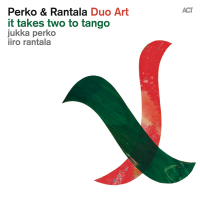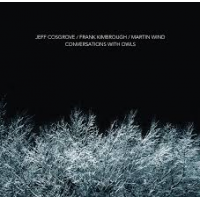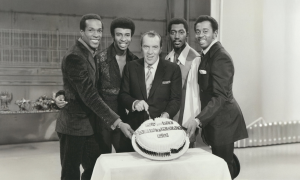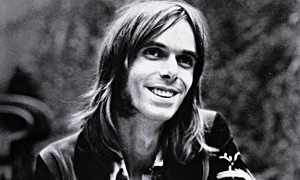Home » Jazz Articles » Film Review » Romantic Warriors III - Canterbury Tales
Romantic Warriors III - Canterbury Tales
 Adele Schmidt and José Zegarra Holder (Directors/Writers)
Adele Schmidt and José Zegarra Holder (Directors/Writers) Romantic Warriors III -Canterbury Tales
Zeitgeist Media
2015
Progdocs third documentary film on the progressive music scene hits the motherload focussing on the very start of it all. The so-called Canterbury Scene started with The Wilde Flowers, a nascent version of Soft Machine and to some extent precursor of Caravan too. The Canterbury name emanates from the shared geographical area of some of the scene's chief exponents such as Robert Wyatt, Pye Hastings, Kevin Ayers, Richard Sinclair, Mike Ratledge and Brian and Hugh Hopper, and although it didn't dwell on it, also on the fact that several of them attended the same school in that town (The Simon Langton Grammar School) forming, quite literally, an old boys' network.
The sporadic but ubiquitous appearances by the late Daevid Allen, a founder member of Soft Machine and then Gong adds a note of poignancy to the whole proceedings, particularly as Allen is not willing to play the part of a straight interviewee, rather he mugs to the camera, knowingly winking to the audience. He was clearly unwell by the time the interview took place, gaunt and frail-looking, but still sprightly, witty and defiantly undefeated, his humour still intact. Interestingly, he credited the early dramatics of a young Peter Gabriel in Genesis as a major influence on the development of the theatrical side of Gong.
Soft Machine are understandably given a fair bit of exposure in their various incarnations, and from the black and white clips of the Wyatt/Ratledge/Hopper period it is interesting to note how Robert Wyatt was certainly one of (if not, the) true progenitors of jazz rock, his playing a near-superhuman example of a natural drumming genius combining the two styles, even more cohesively than say Jon Hiseman or Ginger Baker, though clearly they made indispensible contributions to the genre.
Caravan are featured extensively too and Richard Sinclair, Dave Sinclair, Pye Hastings and Geoff Richardson make important contributions as does the less-known Dirk "Mont" Campbell, bassist and main composer for Uriel, Egg and later National Health, who left the latter band after a year, sardonically revealing that after his departure the band immediately dropped his ultra-complex numbers. Phil Miller, who made key contributions to Hatfield and the North, National Health and later, In Cahoots, actually made his "Canterbury" debut with Robert Wyatt's Matching Mole (following a stint in the blues rock band Delivery). Wyatt's band also included bassist Bill MacCormick who, justifiably jaded, revealed he couldn't remember when he last received a record company statement.
Another facet of the Canterbury Scene was the proliferation of newer bands that the genre spawned. The list of international groups was surprisingly extensive long but included Supersister (Netherlands), Moving Gelatine Plates and Forgas Band Phenomena (France), D.F.A. (Italy), The Wrong Object (Belgium), The Muffins (USA), and later, the punningly titled Syd Arthur from coincidentally, Canterbury. All these "Sons of Canterbury" declared in interviews how the original Canterbury sound had influenced them and in some magical and unintentional way had created a Diaspora of a particular musical movement identified by a place name in Kent, England.
The film sums up a particular brand of progressive rock although how one band truly qualifies to obtain the accolade "Canterbury" is not quite a matter of geography or personnel. As Canterbury aficionado Aymeric Leroy disclosed, although there were shared connections with say, Gilgamesh (Alan Gowan was in both that band and National Health, and later recorded with Hugh Hopper) they were more jazz rock than Canterbury. The same can be said of, say, Nucleus, the quintessential jazz rock band who "donated" several of its members to later incarnations of Soft Machine.
Whilst this two hour film suffers from a degree of overzealous jump-cutting from one group to another and even one era to another, there is much to commend it. A good balance of musical clips and interviews makes the film easily digestible particularly when the interviewees have previously been rarely seen or heard in a speaking role; David and Richard Sinclair, Didier Malherbe, Roy Babbington, Phil Miller and Daevid Allen are great examples of this. There is no voiceover narration, (such a clichéd and overused documentary device), and this happily allows the musicians and the music to speak eloquently for themselves. This is without doubt absolutely essential viewing for anyone interested in the Canterbury Scene, Progressive Rock or Jazz Rock.
Tags
PREVIOUS / NEXT
Support All About Jazz
 All About Jazz has been a pillar of jazz since 1995, championing it as an art form and, more importantly, supporting the musicians who make it. Our enduring commitment has made "AAJ" one of the most culturally important websites of its kind, read by hundreds of thousands of fans, musicians and industry figures every month.
All About Jazz has been a pillar of jazz since 1995, championing it as an art form and, more importantly, supporting the musicians who make it. Our enduring commitment has made "AAJ" one of the most culturally important websites of its kind, read by hundreds of thousands of fans, musicians and industry figures every month.




















